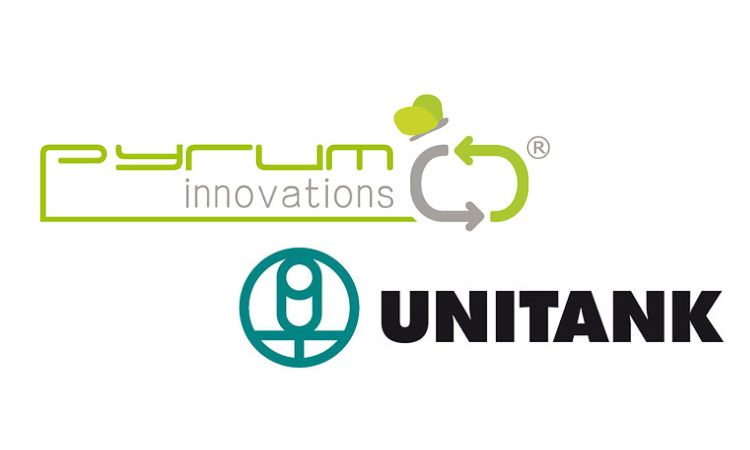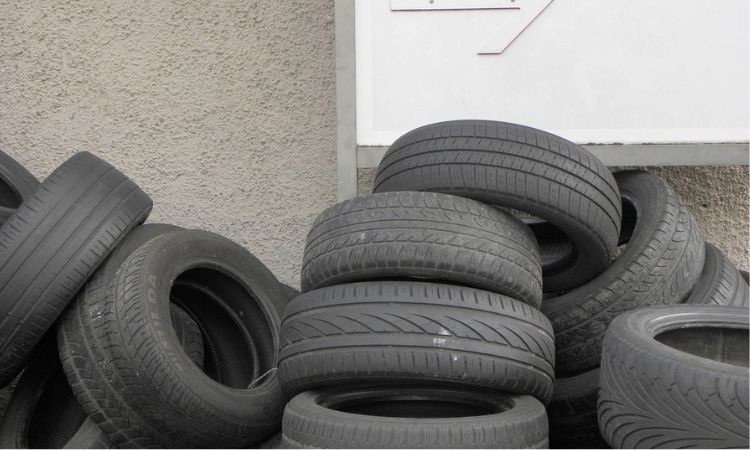Weibold Academy: ECHA enforcement project on recovered substances
Weibold Academy article series discusses periodically the practical developments and scientific research findings in the end-of-life tire (ELT) recycling and pyrolysis industry.
This article is a review by Claus Lamer – the senior pyrolysis consultant at Weibold. One of the goals of this review is to give entrepreneurs in this industry, project initiators, investors and the public, a better insight into a rapidly growing circular economy. At the same time, this article series should also be a stimulus for discussion.
For the sake of completeness, we would like to emphasize that these articles are no legal advice from Weibold or the author. For legally binding statements, please refer to the responsible authorities and / or specialist lawyers.
Introduction
To harmonise enforcement in each EU Member State and check the current level of compliance regarding obligations imposed on industry by the REACH, CLP and PIC regulations, the European Chemicals Agency (ECHA) installed a forum which coordinates various enforcement projects.
One of the main projects are the REACH-EN-FORCE (REF) projects. The REF-projects are carried out by inspectors based in the national authorities in the participating Member States. The resulting information is collected by ECHA and the Forum Working Group. A final report on the findings of the REF-project is then produced. Ultimately, the goal of the REF-projects is to improve the quality of enforcement in the Member States but also to improve the compliance of registrants with the REACH, CLP, and PIC regulations.
Besides the REF projects an enforcement project has been undertaken by the Forum that explored, for the first time, the interface between REACH and waste legislation (Waste Framework Directive) for substances recovered from waste.
This EU enforcement project (pilot) inspected 107 products during 2021 in 11 EEA countries, and the findings of which were published on November 4th, 2022. The entire report can be downloaded here.
Obligations under REACH
The European Chemicals Agency (ECHA) is a legally autonomous, independent EU authority which, in accordance with Regulation (EC) No. 1907/2006 (REACH), regulates the technical, scientific, and administrative aspects of registration, evaluation and authorization of chemicals. It is based in Helsinki, Finland, and ensures the registration, evaluation, authorization, and restriction of chemicals in a uniform procedure within the European Union. ECHA started its work in 2007.
The purpose of the REACH Regulation ((EC) No. 1907/2006) is to ensure a high level of protection of human health and the environment, including the promotion of alternative methods for assessment of hazards of substances, as well as the free circulation of substances on the internal market while enhancing competitiveness and innovation. (Article 1(1))
The provisions laid down in REACH applies to the manufacture of recovered Carbon Black (rCB) and tire-derived-pyrolysis oils (TDO). As soon as a material ceases to be waste, REACH registration requirements apply in the same way as to any other material, with a few exceptions granted conditionally.
REACH defines manufacturing as “production or extraction of substances in the natural state” (Article 3(8)). Substances that have undergone a chemical modification during the waste and recovery process clearly fulfil this definition. Therefore, a recycler of end-of-life tires (ELT) who recovers chemical substances (oil and rCB) by means of a selected chemical recycling technology (pyrolysis) becomes a manufacturer of substances and a REACH duty-holder.
An introduction to the obligations of a chemical recycler of ELTs can be found here.
Numerous objectives of the pilot enforcement project
The objectives of this pilot project were to:
- assess the target group’s compliance with REACH provisions on the registration of recovered substances in the waste recycling sector;
- assess whether the recovered substance/mixture fulfils the end of waste (EoW) criteria required by the Waste Framework Directive (WFD) and confirm whether an EoW decision was given;
- assess the level of compliance of safety data sheets (SDSs) for recovered substances/mixtures placed on the market by waste operators with a view to compliance with REACH Article 31;
- optionally, assess the compliance of waste operators with provisions of CLP (classification of recovered substances/mixtures, labelling, notification of classification and labelling (C&L)) and/or the POPs Regulation (placing on the market);
- where required, enforce compliance of target groups with REACH/CLP/POPs obligations covered in the project;
- contribute to harmonised enforcement in the EEA;
- promote cooperation among enforcement authorities in the EEA with regard to the recovered substances;
- foster information exchange between REACH and waste inspectors;
- contribute to the improvement of the capabilities of enforcement authorities;
- raise awareness of REACH obligations among waste operators.
Compliance with Article 2(7)(d) REACH
Substances, on their own, in mixtures or in articles, which have been registered in accordance with Title II and which are recovered in the European Community are exempted (from the requirement to register) if a) the result from the recovery process is the same as the substance that has been registered before in accordance with Title II; and if b) the information required by Articles 31 or 32 relating to the substance that has been registered in accordance with Title II is available to the establishment undertaking the recovery. (Article 2(7)(d))
Target of this EU enforcement pilot project was to assess compliance with the criteria described in REACH Article 2(7)(d) regarding exemptions for recovered substances from REACH registration obligations.
This exercise was performed in 46 cases from various industries. Assessing the first condition of the exemptions (sameness of recovered and registered substance) showed that there were no issues in 63 % of cases. However, inspectors found a clear breach of this condition in 23 % of cases and could not conclude on compliance in 11 % of cases during the operational phase of the project.
The second condition for exemption under REACH Article 2(7)(d) (availability of information) was fulfilled in 96 % of cases.
Inspectors also checked that safety data sheets (SDSs) were provided together with recovered substances/mixtures, and their classification, labelling and packaging. SDSs were not always compliant (the issues were mainly with the identity of the substance or information on the composition and ingredients). In 37 % of the investigated cases, inspectors identified a non-compliance with the main titles of CLP Regulation.
Compliance with Article 6 WFD (EoW)
The REACH inspectors also investigated and confirmed the compliance with Article 6(1) of the Waste Framework Directive (WFD) where the conditions when waste ceases to be waste are outlined in four general end-of-waste (EoW) criteria:
- the use of a substance/object for a specific purpose;
- the existence of market demand for a substance/object;
- compliance of a substance/object with relevant legislation, technical requirements or standards applicable for the products;
- absence of adverse impact on human health and the environment due to the use of a substance/object.
For the 55 materials in the scope of this investigation, in most cases where an EoW status was granted to the material, it was claimed by the company (56%).
In 18 % of cases, the EoW status was granted by the authority (mainly on the national level, from the environmental area of competence).
Where no Union-wide EoW criteria have been adopted, Member States may decide at national level whether certain waste has ceased to be waste. It can be done using national criteria (in 13 % of the reported cases) or single ad hoc decisions (20 %) as the background for the EoW claim. However, in most cases, the EoW was granted by someone else (e.g., company rules) or the background was unknown.
In 59 % of cases, the EoW claim of the inspected material was verified ex post by the inspectors (in most cases, it was done by waste inspectors). Of these cases where the inspectors verified ex post, 68 % were cases where the EoW was self-claimed by the companies.
Possible weaknesses in Article 2(7) REACH
During the inspections in the participating countries, inspectors found interesting and challenging cases that prompted some questions. (The following paragraphs are excerpts - the full wording can be found here)
- The wording of Article 2(7)(d) leads to the situation where only the first waste operator producing the recovered substance must register this substance. From the moment of registration, all subsequent waste operators producing the same recovered substance can benefit from this registration by claiming sameness to a registered substance, because from then on it has been “registered before”. This puts the burden of registration only on the first waste operator and could form a big obstacle for waste operators to comply with REACH.
- In a case where a recovered substance was registered as an intermediate, the burden of registration was limited. Other manufacturers of the same recovered substance can claim exemption from registration based on Article 2(7)(d) because the substance has been registered before.
- Another consequence of this is that according to the Guidance on recovered substances, the use of a recovered substance is not limited to the identified uses of the “original” registered substance. This means the subsequent waste operators are not limited to the use of the substance as an intermediate.
- Manufacturers of a recovered substance that is exempted from registration do not need to perform a chemical safety assessment or complete a chemical safety report on the substance. Therefore, registering a recovered substance as an intermediate could be an intentional way for subsequent waste operators to bypass obligations on identified uses and forego performing chemical safety assessments.
- The chemical composition alone is not sufficient for identifying substances of unknown or variable composition and complex reaction products (UVCBs). UVCBs in general are identified by their chemical composition, their source (or origin) and the most relevant steps taken during processing. The source materials and the production process of the recovered oil and petroleum products are therefore equally important for identification.
Summary
To explore the workings of the interface between REACH and the Waste Framework Directive, the EU, in 2021, conducted a pilot enforcement project in which 107 products were inspected in 11 EEA countries, and the findings were published on November 4th, 2022.
In 26 % of the inspected recovered substances, the inspectors found issues and the substances did not fulfil the requirements of sameness to be exempted from registration based on Article 2(7)(d)(i). Where sameness has been recognized under Article 2(7)(d), the required information on the substance was also available in virtually all cases.
100 % of the safety data sheets inspected had the regulated structure and sections. But not all were compliant in all its sections. Most non-compliances with the safety data sheets were related to information on the identity of the substance, or composition of the mixture.
REACH national enforcement authorities are therefore recommended to monitor the situation of recovered substances placed on the market given the high percentage of non-compliance found in this pilot project.
As the results of this (pilot) enforcement project showed that in most cases no harmonised or national criteria were used to determine EoW status, once again it was recommended to harmonise the EU criteria for EoW in areas not yet covered by EU legislation. Furthermore, the ECHA working group recommends that the burden of the registration should be shared by all companies producing the same substance by changing REACH Article 2(7)(d) in such a way as to ensure that no longer only the first waste operator has to register a recovered substance that was not registered before.
Source: Forum Report on the pilot project on recovered substances exempted from REACH registration, ECHA-22-R-07-EN, ISBN: 978-92-9468-176-8, DOI 10.2823/73734, publ. November 2022
Weibold is an international consulting company specializing exclusively in end-of-life tire recycling and pyrolysis. Since 1999, we have helped companies grow and build profitable businesses.









